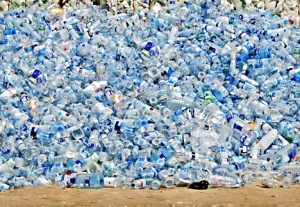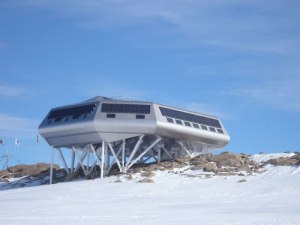There is a place in north Ontario called Marten Falls Indian Reserve 65. It’s so far up north that Google Maps can’t even calculate a distance to it, for no permanent road exists. A 500 km flight north east out of Thunder Bay will get you there. When it was settled, the river was the road and the main settlement was the trading post at the junction of two rivers. Things have changed since then, mostly due to massive river diversions undertaken to generate hydroelectric power. The dead of winter temperature is the same however. Outside readings from the area on the February day when the entire province was under an extreme cold alert was -39 celsius. Factor in the wind chill and it felt like -49. Your lovely hipster Canada Goose jacket would probably provide a T-Shirt level of protection in these conditions.
Northern Ontario is also a place where provincial parks have been established that only those with lots of disposable income will ever see in person. If you see someone dropping a thousand bucks or two at the cash register at Mountain Coop or SAIL, this is likely the kind of outdoorsy place they are headed for. This isn’t car camping with a 2-4 of beer and hot dogs. Ontario Parks describes Wabakimi, the second largest park in the province, as having world class canoe routes and legendary fishing. The Albany river, on which Marten Falls is situated, is one of those routes. Southern people can get all kinds of devices at any outdoor store to safely filter some of it’s vast, pristine water to drink on a backcountry fishing trip. Yet if you live at Marten Falls First Nation, every drop of drinking water is consumed out of a plastic bottle flown in from elsewhere. The local landfill is teeming with tons of plastic that will never degrade nor be reclaimed. There are no feel good blue bins up here. 
(A file photo of plastic bottles for perspective. This is not the Marten Falls dump)
For the past 10 years, Marten Falls has not had potable drinking water. They do have an 18 year old water treatment facility but it is desperate need of repair. An expensive filter needs to be replaced and the plant itself has developed a crack, understandable with such an extreme outdoor temperature range. Until these issues are sorted out, which will likely involve a complete rebuild, the Federal Government has been flying in bottled water for consumption with a total bill of $2.13 million dollars over the period the plant has been idle so far. Families with babies get extra bottles of water to bathe them, so they don’t risk getting a bacterial infection from what is coming out of the tap. The adults are forced to endure the risk, which they have for a decade now. How long would this type of situation be tolerated in Toronto or Oakville? A day? Within a week there would be riots. After a month, the government would fall.
The Marten Falls First Nation people are signatories to Treaty 9, also known as the James Bay Treaty. When it became clear in the early 20th century that great riches were to be had from Indian Land, promises were made by the settler government and signatures obtained from the chiefs to “extinguish the Indian Title” as the commissioners put it in 1905. Some highlights: 90,000 square miles gained for The Crown, a square mile allocated to each family of five (adjusted for size), reserves and residents were to be dealt with by “His Majesty, as he sees fit” and as a gift from HM to “his Indians”, everyone was given eight dollars and was entitled to four dollars a year in perpetuity. It’s a complicated arrangement between nations and massive amounts of time, energy and cash is spent yearly trying to sort out it’s complexities. In all of this, the feds have ended up responsible for insuring that Treaty 9 people have potable water. Coincidently, the mineral rich Ring Of Fire falls within this territory and many millions more will likely be shelled out to please those wishing to get at it eventually. A two million dollar bill for bottled water is cheap in the grand scheme of the north. Our current Most Gracious Majesty will likely reserve comment.  This is the Princess Elizabeth Polar Research Station in Antarctica. It’s not named after a younger version of Our Sovereign. Operated by Belgium, it resembles a crashed UFO or Bond Villain hideout situated 300 kilometres inland from the Southern Ocean. The warmest days there are -5 and the coldest can hit -50. Wind chill is a way of life. Marten Falls is isolated but the PEA Station is possibly one of the most remote places on Earth where humans live periodically. Although it is quite literally in the middle of nowhere, the station does not need to rely on shipped in bottled water, for they have a top drawer water treatment facility that takes care of all of their processing and needs. Schematics to build it are available on line. The small amount of water left over from this operation is so clean, it’s dumped into a nearby crevasse without any concern that it will alter the delicate environment. The entire PEA station cost just over $16 million (CDN) to build, with water treatment being a part of that total cost. And no landfill was required.
This is the Princess Elizabeth Polar Research Station in Antarctica. It’s not named after a younger version of Our Sovereign. Operated by Belgium, it resembles a crashed UFO or Bond Villain hideout situated 300 kilometres inland from the Southern Ocean. The warmest days there are -5 and the coldest can hit -50. Wind chill is a way of life. Marten Falls is isolated but the PEA Station is possibly one of the most remote places on Earth where humans live periodically. Although it is quite literally in the middle of nowhere, the station does not need to rely on shipped in bottled water, for they have a top drawer water treatment facility that takes care of all of their processing and needs. Schematics to build it are available on line. The small amount of water left over from this operation is so clean, it’s dumped into a nearby crevasse without any concern that it will alter the delicate environment. The entire PEA station cost just over $16 million (CDN) to build, with water treatment being a part of that total cost. And no landfill was required.
Rebuilding a southern type water treatment plant in north Ontario will probably yield the same lousy result as the prior set up. The time is well past for the engineers, bureaucrats and all concerned parties to cut the crap and change up the model for one that actually works. If entire rivers can be diverted to create hydro power or researchers can have a glass of drinkable water in an uninhabitable place, then creating a safe, continuous water supply for 800 people in this province is well within the realm of possibility and cost. Who will make it happen?
http://www.ontarioparks.com/park/wabakimi
http://www.thestar.com/news/canada/2015/02/14/ottawa-sends-2m-in-bottled-water-to-first-nation.html#
http://wasayawild.com/page/cultural-map/marten-falls-first-nation
http://www.aadnc-aandc.gc.ca/eng/1100100028863/1100100028864